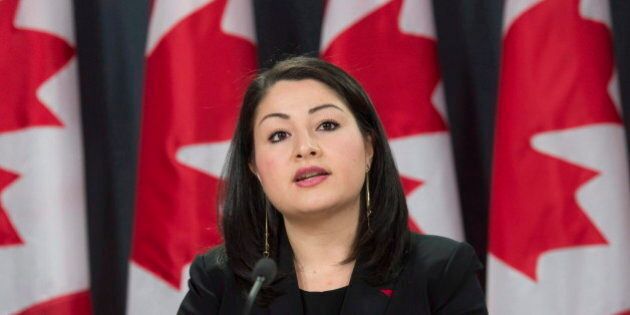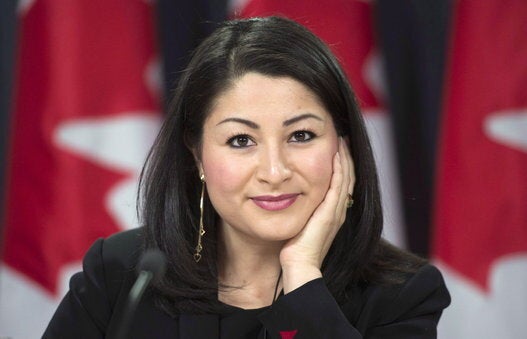
Maryam Monsef's "Cinderella story," from refugee to Canadian Member of Parliament, is the kind of mythical fairytale that reinforces Canadians' belief their nation is not only welcoming to immigrants, but offers them equal opportunity to ascend to the highest offices of the land.
Even U.S. President Obama made reference to it when he made a stop in the House of Commons last summer.
" Like the girl who fled Afghanistan by donkey and camel and jet plane, and who remembers being greeted in this country by helping hands and the sound of robins singing. And today, she serves in this chamber [...] because Canada is her home."
- President Obama in Ottawa
After reporters revealed the mismatch between Minister Monsef's stated and actual birthplaces, a politically-motivated "outrage" ensued. Did she purposely mislead her colleagues, her constituents? Was she a fraud? Could her Canadian citizenship be revoked?
The first ever Afghan-born Minister went on a media tour to explain herself smooth things over with the Canadian public. The public relations exercise aimed to deflect blame to one particular family member who allegedly made the innocuous "mistake."
Like millions of immigrant families that came before her, Maryam Monsef probably faced significant resistance from her peers during her time in small town Ontario in the mid-1990s. She discusses her struggle to "fit in" with her accent, her "different clothes," and her "misunderstanding of the culture" in this April 2016 interview. The notion of integrating and assimilating into Canadian society by catering to the Anglo-Saxon dominant culture has always been a winning formula.
Along the way, Monsef's family name was truncated, from Monsefzadeh.
This is a tried and true tactic to placate "old stock Canadians" who can be cold to those with "ethnic-sounding" names.
The first Arab immigrant to Canada, Ibrahim Abu Nadir, became Abraham Bounadere in 1882. The Canadian co-creator of the Superman comic character, Joseph Shuster, was originally a Shusterowich. Poles, Italians, and Eastern Europeans have a similar history of dodging native Canadians' prejudices by camouflaging their ethnicity. Przystawski became Preston, Zanetti became Zaneth, Simonović became Simon.
Schoenwald to Shinwell: "My Jewish grandmother's family name was originally Schoenwald, which was changed to Shinwell sometime in the late 19th Century."
For over a century, immigrants have altered and anglicized their surnames to help lessen the burdens of nativism, ethnic bias, and name-based discrimination.
It's particularly malevolent to vilify migrants who must strategize to dodge the bias bullet.
Some have gone further still to dissimulate their ethnic origins. Because of WWII and its negative effect on Germany's reputation, German-Canadians pretended to be Dutch, Scandinavian or Russian.
It isn't surprising that a Persian migrant to the West would avoid publicly associating themselves with a country that was part of the "axis of evil," in a post-9/11 era.
These days, immigrants resort to all sorts of artifices to gain employment survive. Women can shed their (ethnic-sounding) maiden name, and keep the new one post-divorce and, when convenient, post-remarriage(!). Many Asian immigrants adopt a Christian first name in an attempt to fit in. Latinos, who often have two last names, might choose to go by the least ethnic-sounding one. The pains immigrants and minorities go through to 'whitewash' their resumes can stave off, if temporarily, Canada's pernicious prejudice problem.
Conservative MP and leadership contender Tony Clement (born Anthony Payani) has floated the idea of a criminal investigation regarding Minister Monsef's family.
It's particularly malevolent to vilify migrants who must strategize to dodge the bias bullet.
The problem Canadians need to address isn't found within the pages of Maryam Monsef's 20-year-old refugee petition. The burden is on everyday Canadians who have tacitly accepted anti-ethnic prejudices. Migrants like Maryam are condemned to navigate around Canadians' biases. These nocuous societal biases require a correction more so than Monsef's birth certificate.
Follow HuffPost Canada Blogs on Facebook
Also on HuffPost:
